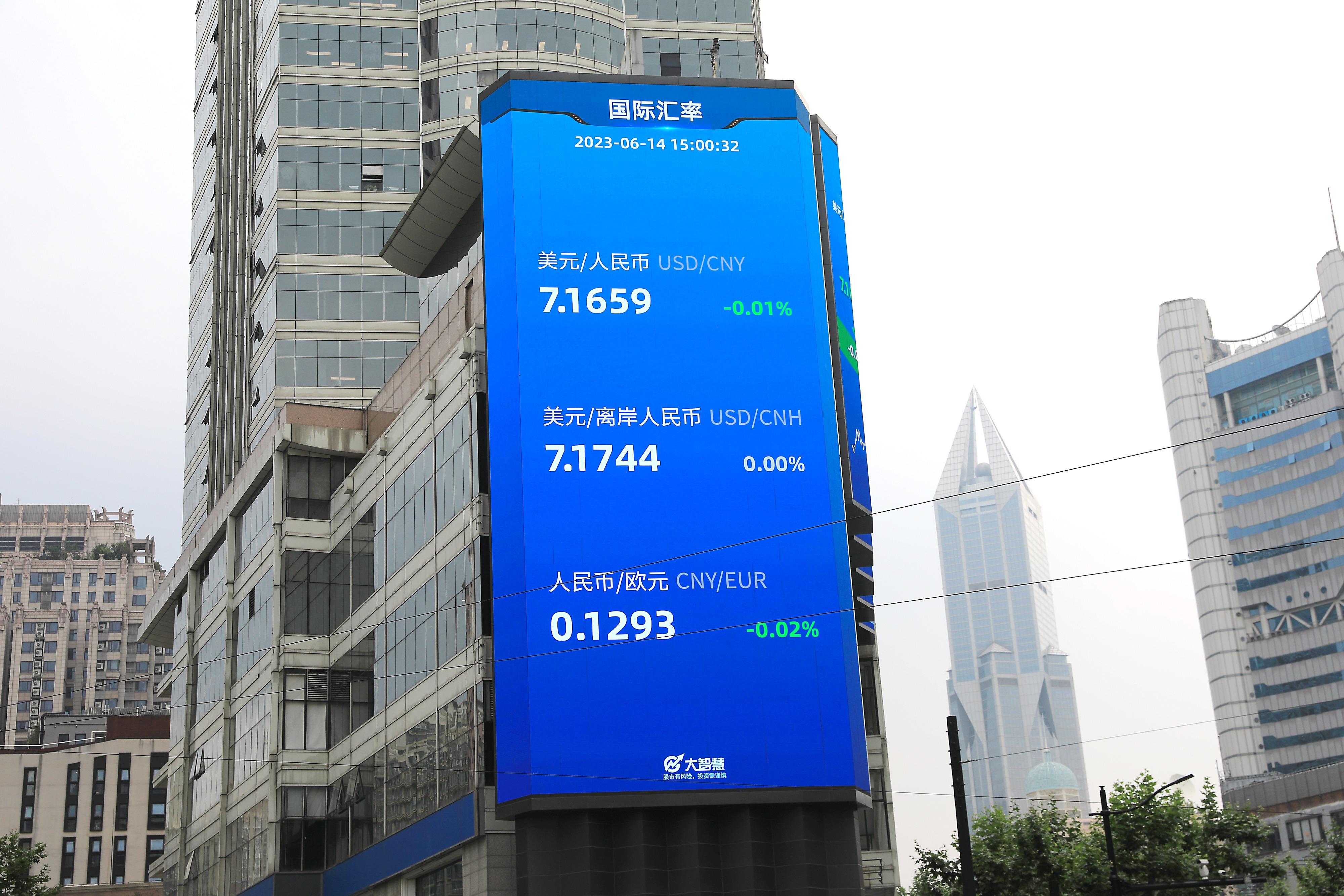 A screen in Shanghai shows exchange rates of the renminbi to the US dollar and euro. (PHOTO PROVIDED TO CHINA DAILY)
A screen in Shanghai shows exchange rates of the renminbi to the US dollar and euro. (PHOTO PROVIDED TO CHINA DAILY)
China's foreign exchange market is more capable of maintaining steady performance in the second half of the year than in the past as a series of supportive policies are set to help economic recovery regain momentum, experts and officials said on Thursday.
Foreign exchange market stability has come under the spotlight as the People's Bank of China, the country's central bank, cut benchmark interest rates this week, sparking discussions on whether easing interest rates will widen the US-China interest rate differential and intensify depreciation pressure on the yuan.
Given that economic fundamentals remain the most prominent determinant of exchange rates, experts said the latest rate cuts are more likely to support the yuan than weaken it in the medium term. Rate cuts, they said, are likely to go in tandem with other policy support in bolstering China's economic recovery.
Wang Chunying, deputy head and spokeswoman of State Administration of Foreign Exchange, said on Thursday that China's economy will continuously improve as coordinated macroeconomic policy support takes effect at an early date, which will lay a more solid foundation for the country's foreign exchange market to perform steadily.
"Cross-border capital flows are likely to stay stable and orderly," Wang said, supported by the dollar's waning strength and the growing resilience of China's foreign exchange market.
"Following a period of short-term fluctuations, the Chinese yuan is poised to rally against at least the weighted average currency basket of China's trading partners with growing interest from global capital of investing in China," said Robin Xing, chief China economist at Morgan Stanley.
The central parity rate of the onshore yuan against the dollar had weakened by about 4.03 percent since April to 7.1489 on Thursday. The CFETS RMB Index, which tracks the yuan exchange rate against a basket of currencies of China's trade partners, also weakened by 2.15 percent to 97.65 from April to June 9.
According to Xing, the yuan's recent depreciation is attributable to the US economy's better-than-expected performance and China's slowing economic recovery.
Looking ahead, China's recovery is likely to regain momentum as policymakers beef up support measures while a steady gain in service consumption drives up employment, Xing said.
In a sign that policymakers are ramping up support for the economy, the PBOC cut interest rates of its medium-term lending facility, a key policy benchmark for one-year loans, by 10 basis points to 2.65 percent on Thursday, following rate cuts of two other liquidity provision tools on Tuesday.
Experts said the rate cuts, the first ones since August, indicate policymakers' commitment to helping the economy shake off recent weakness and herald wider policy support.
Potential growth-stabilization policies in the pipeline could lead to stronger fiscal expansion, higher funding for local governments, easing of real estate regulations and acceleration in infrastructure investment, according to analysts at investment bank China International Capital Corp Ltd.
While reductions in interest rates could weigh on the yuan in the short term, easing financing costs for the real economy, in tandem with other policy support, would help China's recovery accelerate again and achieve full-year GDP growth of more than 5 percent, thus supporting the yuan exchange rate, experts said.
"It is highly likely that the yuan will gradually stabilize and appreciate against the dollar in the second half of the year," said Lou Feipeng, a researcher at Postal Savings Bank of China.
Also strengthening the foundation of stability in the foreign exchange market will be China's ability to maintain a relatively high goods trade surplus as Chinese manufacturers' competitiveness in areas like new energy products will provide a buffer against weakening external demand, experts said.
"In an environment of global stagflation, China's supply advantages are expected to stand out in terms of product prices, supply chain costs and enterprises' bargaining power. This will become a key source of export resilience," said Li Chao, chief economist at Zheshang Securities. Economists define stagflation as an economic cycle marked by slow growth, a high unemployment rate and inflation.
Contact the writers at zhoulanxv@chinadaily.com.cn


